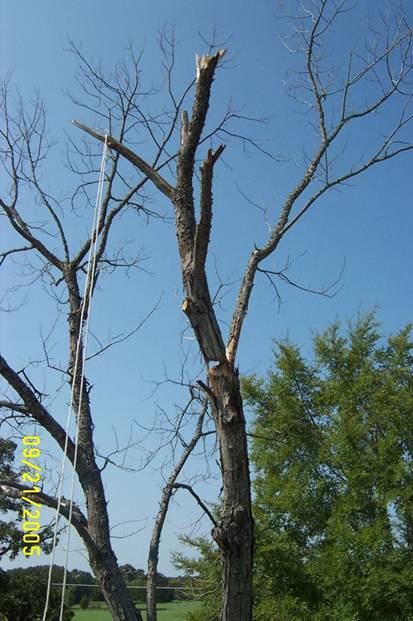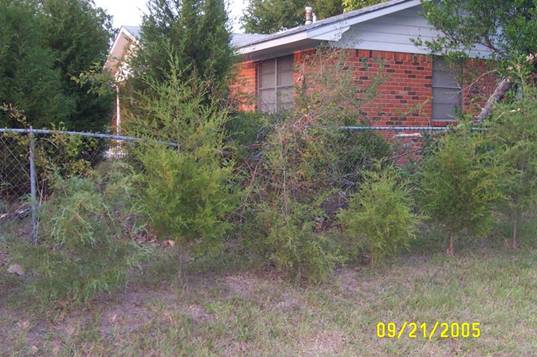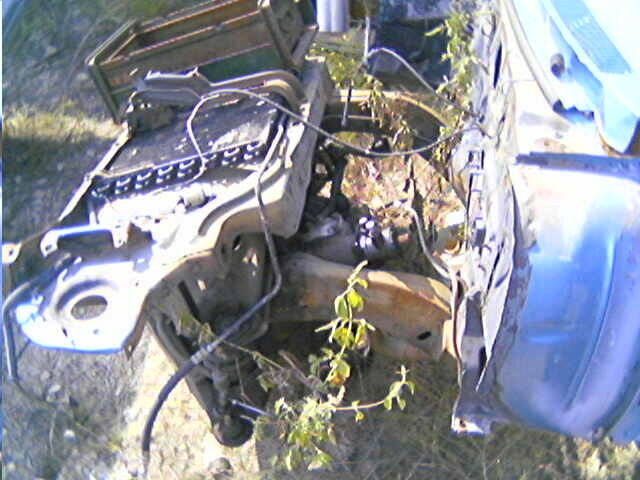An uncle tried out a new arborist technique, shotgun tree trimming. His story follows:
Hey man, I have the tree under control. I’ve taken several pictures and resized them, but probly won’t attach any tonite. I want to be sure to do them in the right order… (like it matters).
Today I got on the roof with the electric pole chain saw and used some strength that I’ve never had… took off a couple of 3′ sections… then got off the roof, used the same saw to take off a couple more. Tomorrow I’ll crank up the gas saw and take this branch down to the level of the other one. At that point, I’ll stop for now. That’ll take the trunk down to about 6′, at which point I’m not worried that a storm will take it over. It’s more than 6′ from the house.
Yeah, it was a serious pain… but it’s whupped now… as long as I don’t screw up when I take off the next 5′ to 6′. Yeah, I know… that’s a heavy piece, even tho’ it’s dry. I’ll be careful. I’ve survived so far, it’d be a pisser to get hurt now.
Watch for pix tomorrow…
Ah, what the heck… I’ll attach a pic of the “before”… and some “after”.
A long shot:

The dark area along the left side is the ROOF!!!

This you see the gable on the South end… and the TV antenna.

This is shot just about on line with the South end of the house. You can see how the left branch leans seriously over toward the house, and the right branch leans over the chain link fence.

I’m just about to pull down a big branch… notice the effects of the shotgun… you can see where I whittled through the 6″ limb. I had no problem pulling it down. I got off the roof and went to the other side of the fence… and pulled like I meant for the limb to NOT go somewhere I didn’t want it to. No prob. Yeah, I placed my shots so as to make the limb fall away from the house. One of the limbs fell as I placed my last shot. It was great fun. That one was in no danger of hitting house. This one could have, but didn’t even come close.

This is a closeup of the results of the shotgun trimming method. I haven’t had this much fun since the hogs tried to eat my brother!

Here is what I left yesterday.

Different view.

Oops.

Closer up of the oops. I shouldn’t have let the neighbor lady goad me into hurrying up. I could have set up the ladder to be 16.5′, had [the aunt] stand on the bottom, cut off several higher limbs and a good chunk of the big branch, then sectioned it so as to lessen the overall mass… but NOOOOOOOO!!! I have to go and dive in with my trusty little Homelite XL (very small, but I went through the carb, tuned it up, put a new clutch housing and chain on it… It’s a mean little saw. I love it! Nevermind yanking on the cord until you think your shoulder will fall off… it starts the 2nd pull… and after it’s semi-warm, you can just pop the rope about 3″ and it’s purring like a kitten. AND, you can set it down and it’ll sit there and idle until you switch it off… or it runs out of gas. I love little engines. Okay… I’ve broken my arm patting myself on the back. My Weed Eater does the same thing.





















 some buffoons, apparently fueled by sites like
some buffoons, apparently fueled by sites like